I ate Cambodia’s best food on a Real Food Adventure - including rat
In a country desperate to welcome tourists back, this traveller discovers some of the best food she’s eaten, including a few unusual specialties.
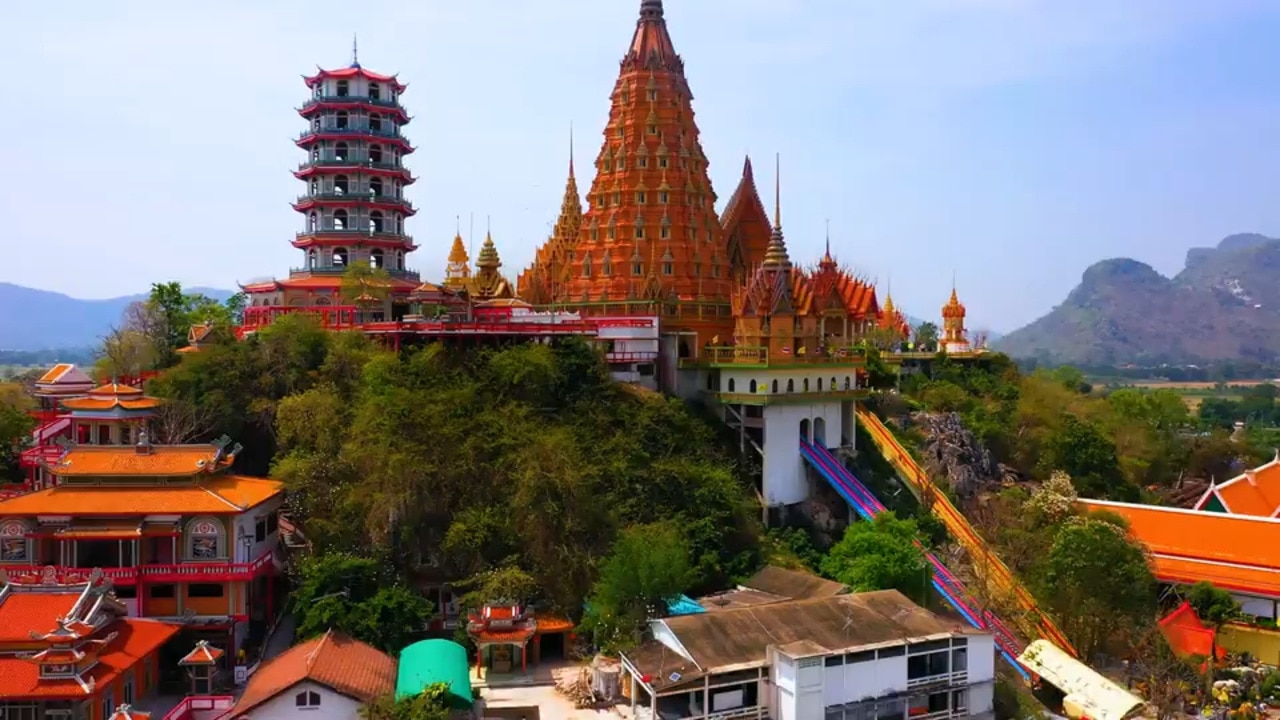
Lifestyle
Don't miss out on the headlines from Lifestyle. Followed categories will be added to My News.
The machine looks like a medieval trebuchet, its heavy timber lengths penduluming up and down under the power of the two women stamping on its crossbeam. This is step four in the laborious nine-step process of making rice noodles and the methods used in this family-run operation haven’t changed much since the ubiquitous Cambodian food was conceived.
Several generations are here, playing their part in the soaking, grinding, wringing, pounding and kneading that’s required to turn out the slippery and silky-smooth staple, and while we all have a go at operating the machines in what looks like a crossfit gym, it’s the eating of the result that we really excel at.
The noodles are dropped into bowls of Khmer breakfast soup, a stew of fish, turmeric, galangal and garlic topped with a scarlet-hued peanut sauce. Its mildness belies a depth of flavour that has me filling my bowl over and over.
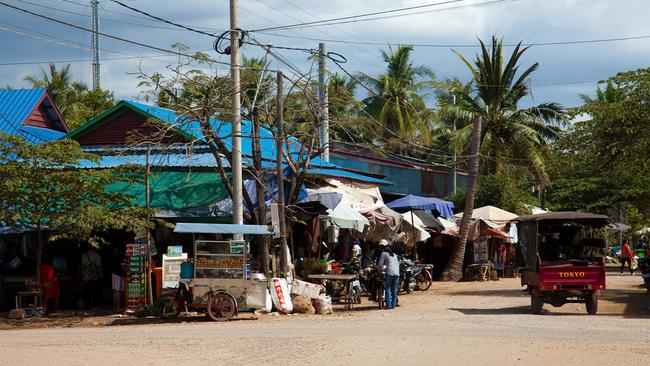
Eat street
We’re visiting the village of Preah Dak, about half an hour through rice paddy-flanked backroads outside Siem Reap, in the northwest of the country. It’s a low-key food lover’s paradise, all but devoid of tourists on the day we visit, but its wide main road of food stalls is full of locals. They are making the trip for the breakfast noodles as well as plates of pork carved from butterflied whole pigs roasted over coals and served with chilli and fish sauce, and Cambodian cupcakes – custardy puddings of rice flour, palm fruit, palm sugar and coconut cream steamed in a banana leaf.
Preah Dak isn’t the kind of place an independent traveller is likely to stumble upon. We’re here thanks to the knowledge and connections of our Intrepid guide, Fila Heng, on a truncated version of the company’s eight-day Cambodia Real Food Adventure, which for us has started and will finish in Siem Reap.
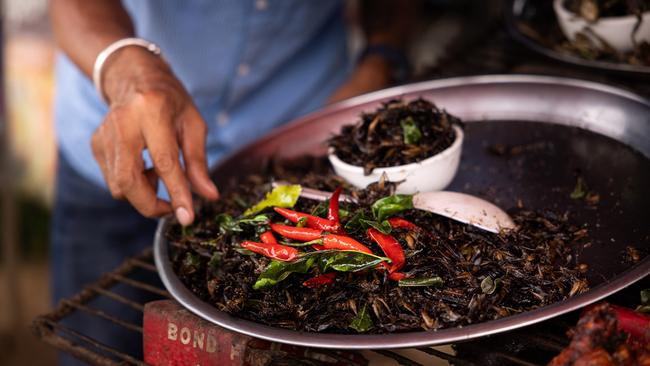
Responsive and flexible, Bong Fila (“Bong” is an honorific used for both women and men here and we derive endless enjoyment from Bong Fila referring to us collectively as “everybong”) moves quickly to adjust the trip based on our interests, adding a visit to an eye-wateringly pungent fermented-fish outlet and traditional food market to our itinerary when he senses our enthusiasm for authentic local experiences. Here we try flash-fried cockroaches and crickets – both deliciously salty, crunchy flavour bombs.
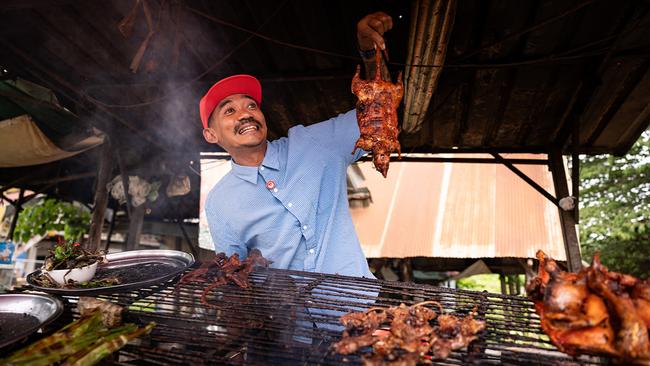
Later he has our minibus driver pull over so we can try some barbecued rat. These are no sewer rats – they’re trapped by rice farmers as they raid their crops, so to my mind these rice-fed rats have the same cachet as grass-fed beef. Marinated in a limy, chilli, peppery mix, they’re splayed on a stick, heads, tails and all, and barbecued before being chopped into bite-sized pieces for us to try. They’re as fiddly to eat and delicious as chicken wings and I’d have no compunction about eating them again.
But to reduce Cambodia to its culinary novelties and street food is to do it a disservice. For every 60c food-cart num pang (a soft bun containing pickled carrot, garlic, chilli, fresh herbs and sardines) or beef skewer served with green pawpaw at a roadside café, there was a fine-dining dish served in stylish surrounds.
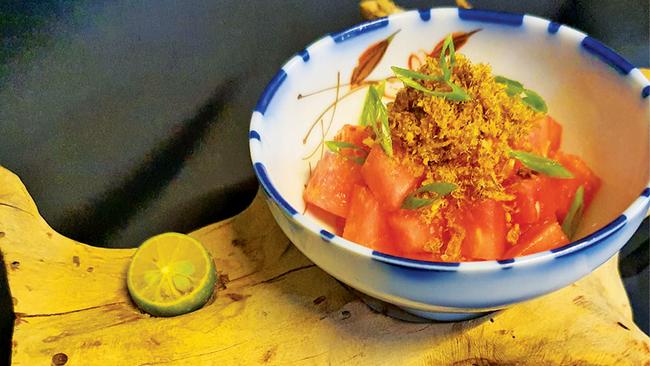
Fine dining
We ate pomelo salad with Mekong lobster in a rice paddy pavilion, sheer curtains billowing in the breeze. We sampled an exquisite watermelon and mushroom dish at Banllé Vegetarian Restaurant where chef Pola Siv combines Cambodian flavours with European techniques. We ate minced pork with coconut milk and palm sugar at Porch, set in a traditional Khmer house – not unlike a Queenslander – tucked down an unpaved alleyway.
And we made our own cocktails at the Sombai distillery where endless varieties of Cambodian rice liqueur are created in a traditional wooden house behind a high fence in the centre of Siem Reap. The liqueur is paired with combinations such as galangal and turmeric, and aniseed and coffee, and even added to the establishment’s range of boozy jams.
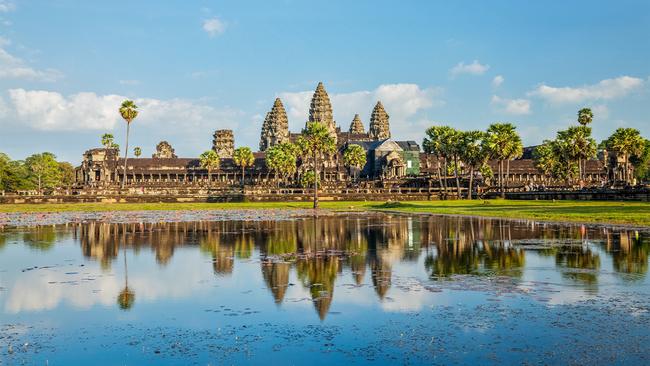
Food for thought
It would be easy to spend your entire time in Siem Reap rolling from one culinary experience to another, and it’s almost possible to forget this is also the location of one of the world’s legitimate wonders, Angkor Wat.
Our visit to the sprawling temple complex delivers the same sense of awe I felt in Petra, Jordan, and the same sense of ancient human connection. Separated by years and distance, a common thread of humans throughout the ages is the desire to build structures so complex and enormous they wouldn’t be contemplated today.
Every brick, every carving and portico here must represent unimaginable toil for the thousands who worked on this 900-year-old series of temples, gates and galleries.
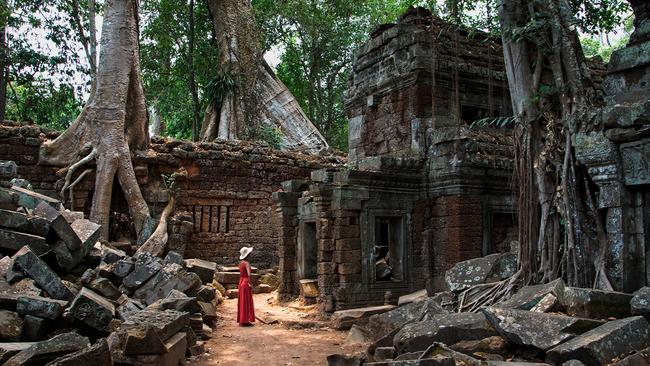
A short drive away is Ta Prohm, a smaller temple slowly being consumed by the jungle, roots and branches wrapping, squeezing and, in some cases, supporting the stonework. It’s perhaps most famous for its starring role in Angelina Jolie’s 2001 film Lara Croft: Tomb Raider, and pre-Covid contained a daily slow-moving crowd of selfie-takers, according to Bong Fila.
Today we have it mostly to ourselves, which is both a privilege and a sobering reminder that Cambodian tourism has been slower to bounce back than that of some of its neighbours.
It’s a similar story at Tonlé Sap, the largest freshwater lake in Southeast Asia and a Unesco-designated Biosphere Reserve.
There’s a long row of empty boats ready to take tourists out to the floating fishing villages, with their schools, grocery stores and houses, and we’re glad to step into one and enjoy the enthusiastic waves of the locals on shore as we make our way down the canal to what feels like a vast inland sea.
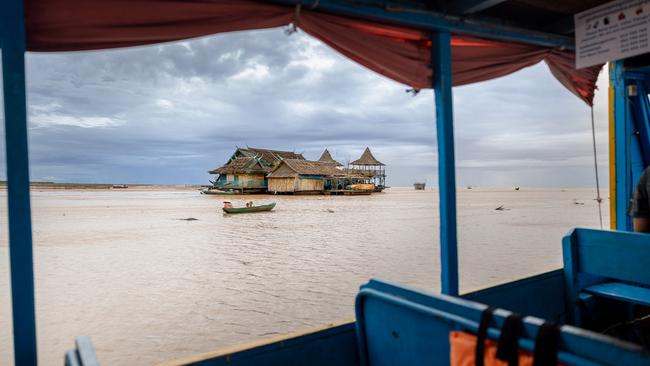
Baby, come back
Perhaps the shortage of tourists explains the warmth of the welcomes we receive everywhere we go, but I’d like to think that’s just how things are in Cambodia.
It’s an altogether gentler place to visit than Vietnam or Thailand. The traffic here is quieter and less chaotic – the numerous motorbike riders and tuktuk drivers don’t seem to drive with their hand constantly on the horn. The traders at the markets we visit seem genuinely delighted to see us, the women cackling to one another as they pose for photographs.
“You’ll see me on a soy sauce label soon,” one tells her colleagues to much laughter.
It’s a sensation repeated in Battambang where we take a day-long bike ride with Soksabike, a tour operator that provides work and training to local students. As we head out of the French-influenced city and into the countryside in search of food artisans, multiple lanes of traffic slow politely to let our wobbly group make its way along potholed roads to visit local families who are pleased to demonstrate how they make rice paper, banana chips and bamboo sticky rice.
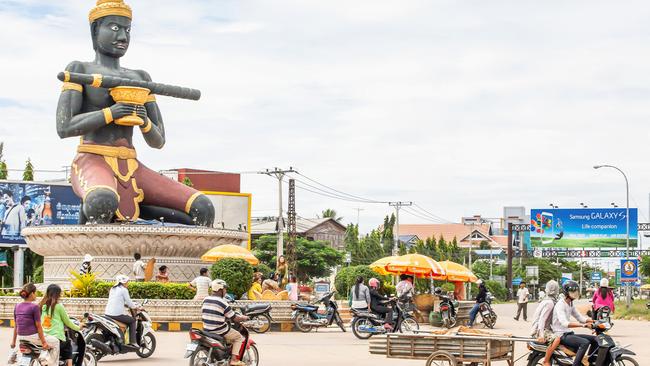
Later that evening we visit a more sobering aspect of Cambodian life, the mountainside killing caves of Phnom Sampeau, where it’s estimated the ruling Khmer Rouge executed thousands of people in the 1970s by bludgeoning them and tossing their bodies into limestone pits. A steep set of stairs leads to the bottom of a pit where a glass cabinet of skulls serves as a macabre memorial to a nightmare era.
In stark contrast, it’s a party atmosphere a few minutes’ drive down and around the mountain. Here, beer and food stalls have popped up, with plastic tables and chairs set out for the arrival of bats. Each evening at sundown they emerge in their millions from a limestone cavern at the base of the mountain. Sometimes they fly directly over the waiting visitors, of which there are many more Cambodians than foreigners, but tonight they take a sharp left and disappear into the distance.
Sitting back in the warm night air, slurping from chilled coconuts as Cambodian families laugh and eat around us, it’s barely a disappointment.
The writer travelled as a guest of Intrepid.
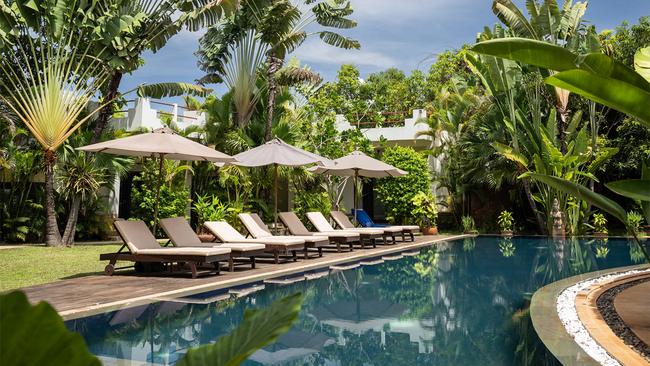
How to get to Cambodia from Australia
Fly in and out of Siem Reap’s enormous and immaculate new international airport via Bangkok, Singapore, Ho Chi Minh City and Kuala Lumpur.
Where to stay in Cambodia
In Siem Reap, Navutu Dreams Resort & Wellness Retreat is an eco-friendly oasis in the middle of the city with three lagoon-style pools and gorgeous rooms starting at $US95 (about $145) per night. In Battambang, Maisons Wat Kor is Angelina Jolie’s hotel of choice. It has rooms in beautiful traditional wooden buildings overlooking a flower-strewn pond starting at $US320 (around $500) a night.
How to experience the best of Cambodia’s food
Intrepid’s eight-day Cambodia Real Food Adventure starts at $1547 and includes meals, transport, accommodation and a local guide. It begins in Phnom Penh and heads to Siem Reap via Kampot and Battambang.
More Coverage
Originally published as I ate Cambodia’s best food on a Real Food Adventure - including rat





